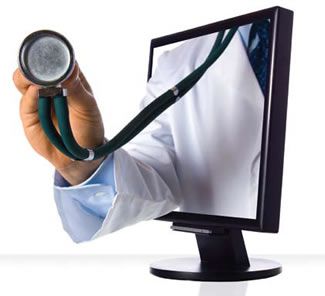Health care is constantly being updated with new methods and technology – it is always improving. As well as us now being able to be safely anesthetized and have invasive surgeries performed on us, we can also receive health care information in new and better ways. Here are some of the ways that technology has changed this.
Receiving info by text
What are we guaranteed to have on us at basically all times of the day? Our smartphones. This makes it a very good method of communicating. When it comes to health information, it is essential that messages get through to patients and the general public, so texting is a great way of ensuring that we receive the information. Hospitals, medical practices, and health clinics now often give patients the option of receiving information via text.
This information usually concerns appointment times and reminders in the days leading up to an appointment to help ensure that the patient does not miss their appointment. Texts could also include information about the practice and when it will be closed. These texts are not sent out by staff manually typing them out – texts like this are usually automated so that patients are guaranteed to get the information sent to them without requiring that much time be spent on it by staff.
This has even extended to things such as STD diagnoses. Patients at sexual health clinics can now find out whether they have an infection via text, with a negative result just telling them that via text and a positive result text recommending them what to do next.
Receiving advice by text
Texts can be advisory as well as informational. Public health campaigns have been around for hundreds of years. For example, in 1485, the Republic of Venice set up the Magistrate for Health, which was a body designed to prevent the spread of disease in the city-state. In the US in the early 20th century, there was a nationwide public health campaign to tackle the tuberculosis epidemic. Public health advice is something else that has been affected by technology, with advice coming via text now in a number of practices across the US. Friendly reminders are sent about how to eat healthier and the amount of exercise that should be taken per week.
Public health campaigns on TV and social media
Television and social media are the two ways to reach the most people, so it is no wonder that health organizations are using them. For example, in the US this year, the Food and Drug Administration promoted the This Free Life Campaign on its website and on social media. It is designed to target LGBT young adults about smoking because they are almost twice as likely to smoke as other adults of the same age group. Public health TV and social media adverts usually concern health issues such as obesity, smoking, and drinking because these are things that people can affect with a change in behavior.
Additionally, public health adverts cover various cancers because these can be detected by people if they know what the signs are – lumps on breasts, testicles and in other places are potential early signs of life-threatening cancers. Medical journals also use social media to promote new studies and point people towards interesting interviews with industry professionals – Oncotarget does this in on various social media platforms.
Websites
Along with being able to receive information via text, patients can now also give and receive information using the websites of medical practices. Practice websites contain all sorts of useful information, from the generic to the specific. For example, the homepage will likely have a general alert such as a warning to patients to avoid coming in unless necessary because there is a very communicable virus going around. These websites will often have a patient portal where they can log in and then get access to more specialized information, as well as being able to make and cancel bookings. With patients able to make appointments online, it means that less strain is placed on the phone systems and receptionists.
Conclusion
Patients and the general public are able to receive more information and faster via a variety of different methods. Social media and television mean that important public health information can be disseminated more quickly. Texts allow for specific information to be sent to patients when they need it, such as reminders about bookings and even the results of tests.













